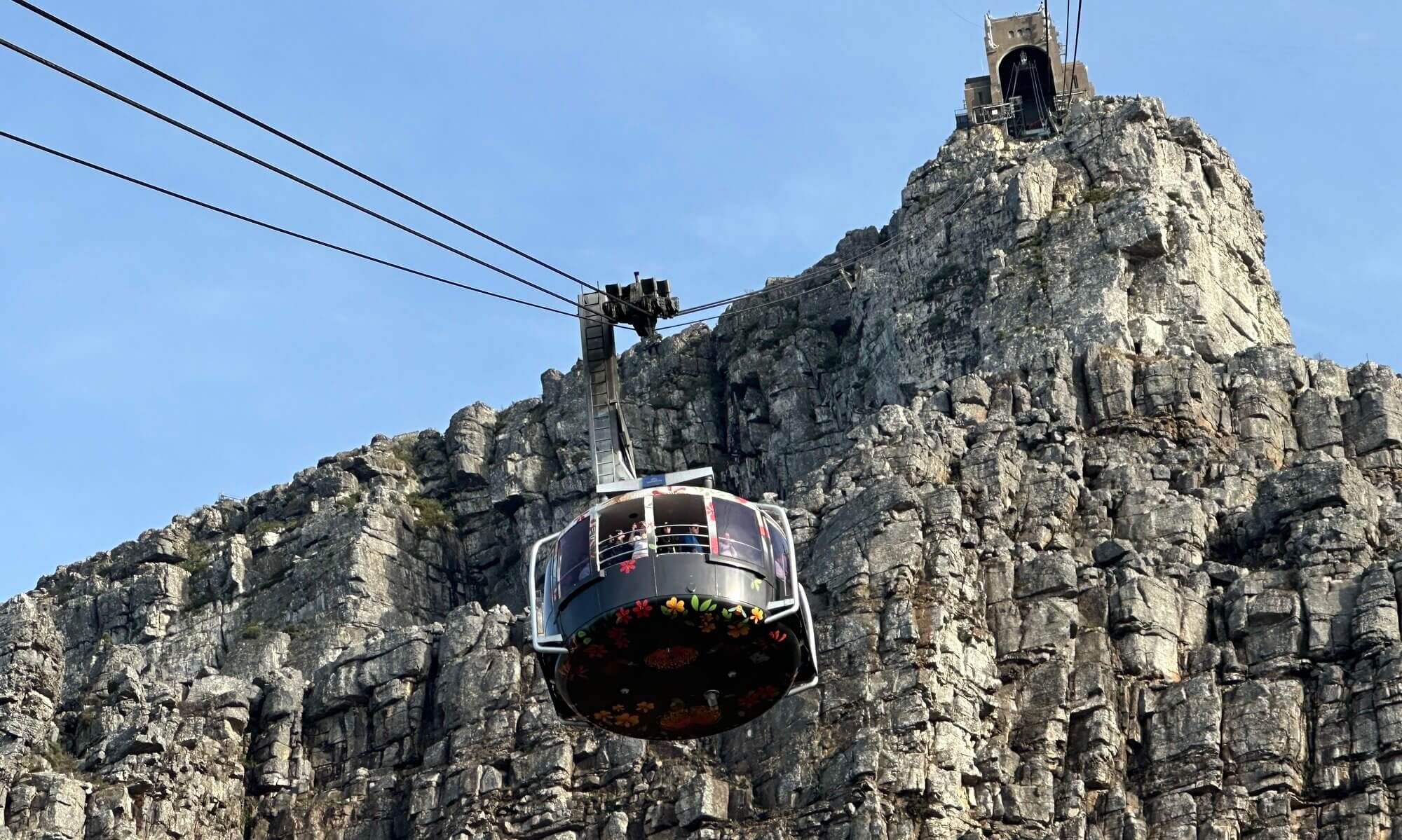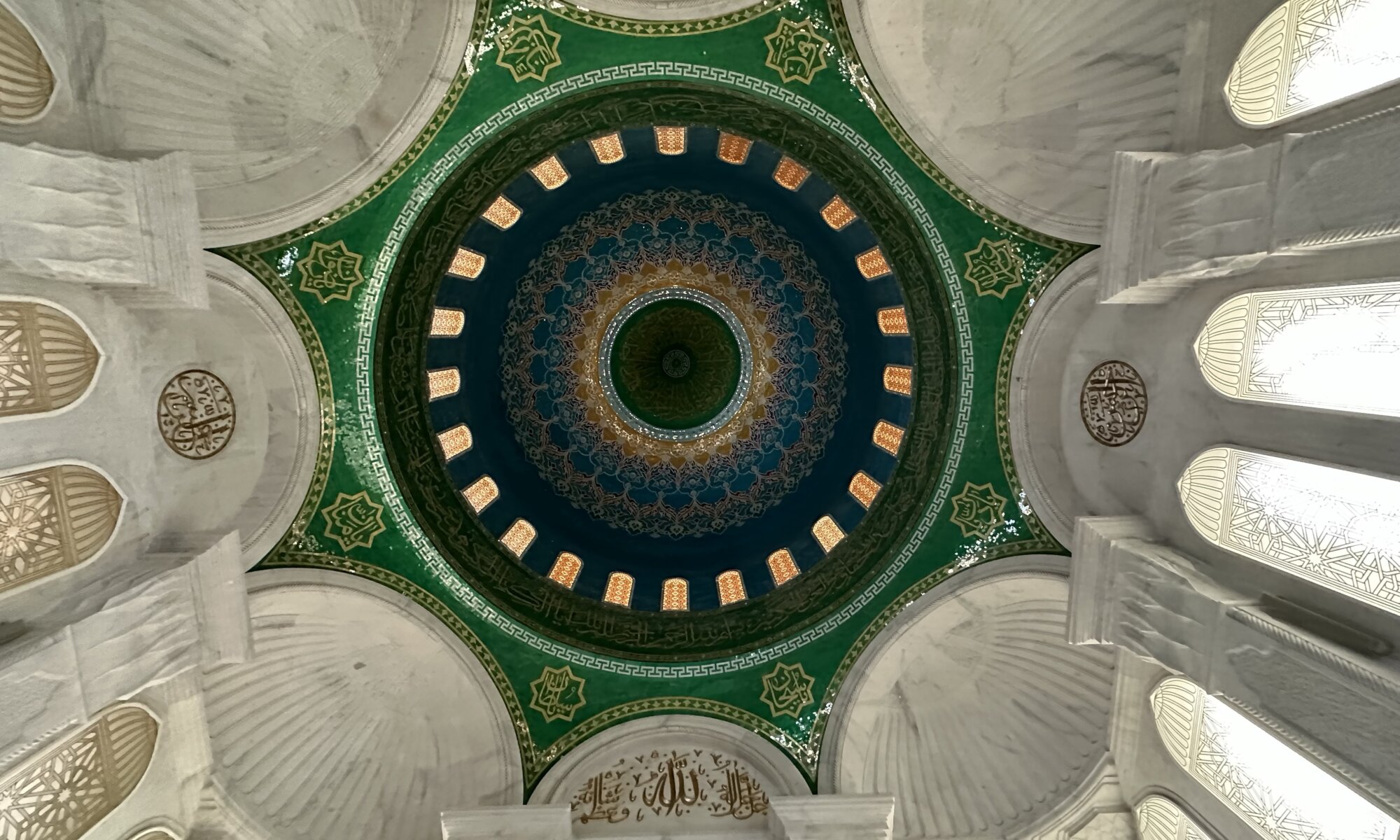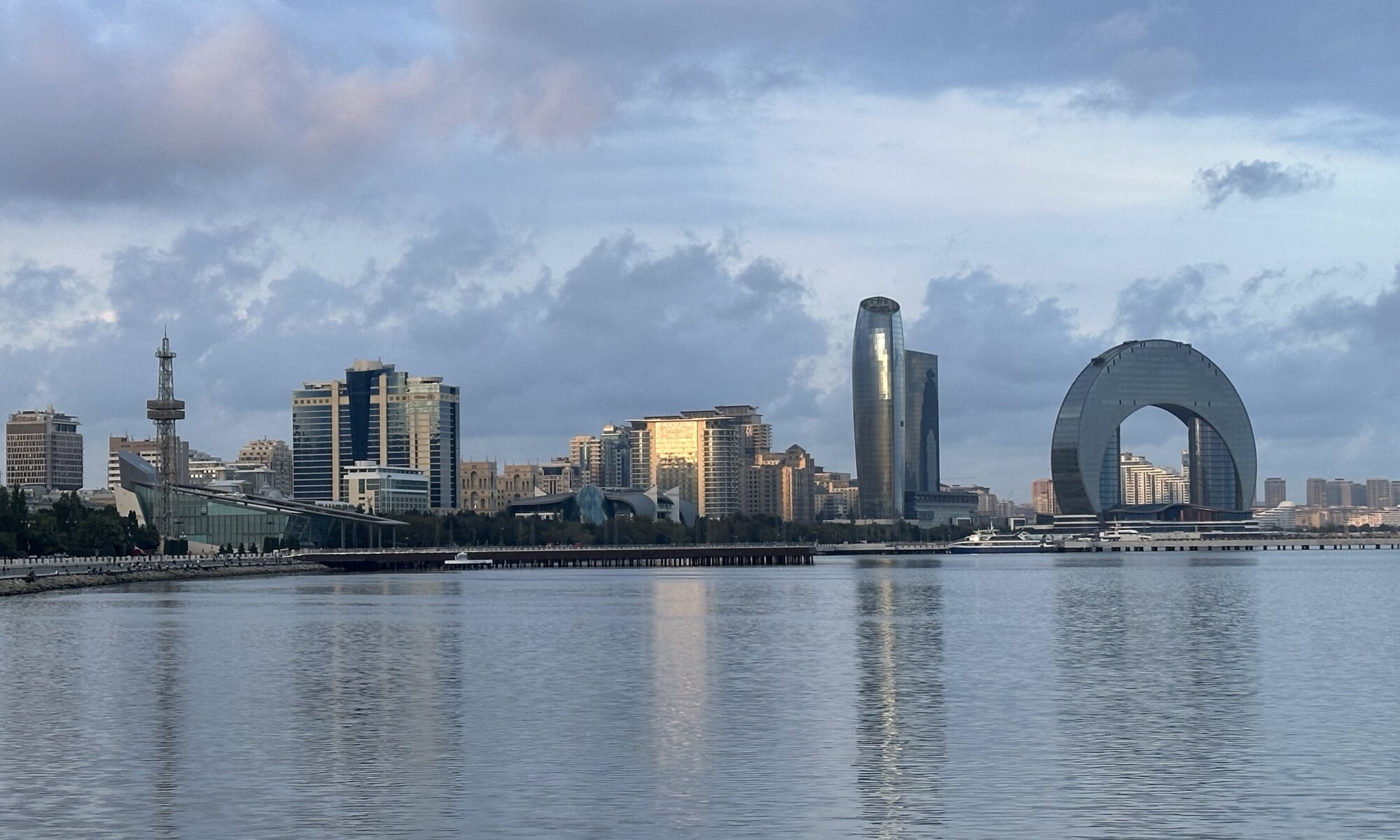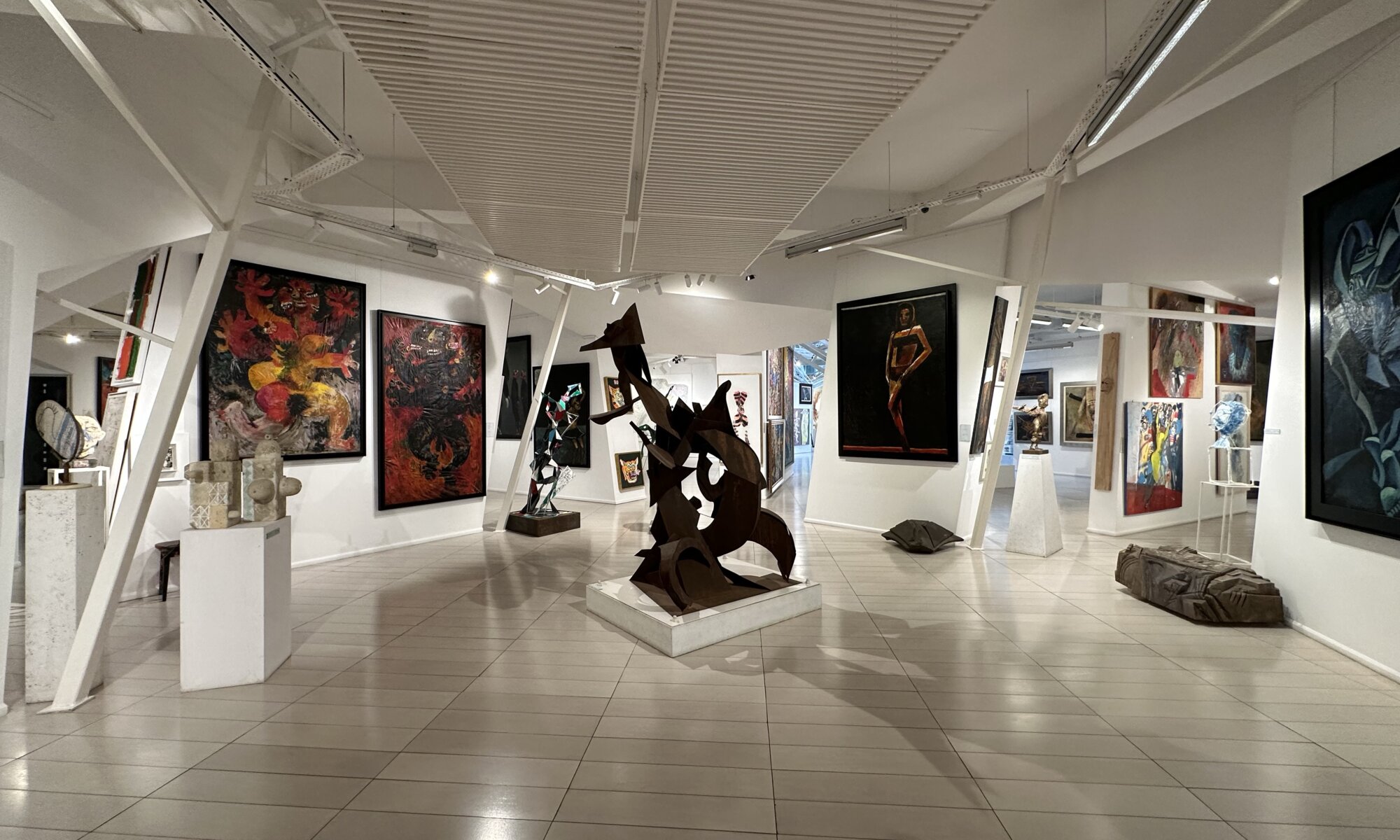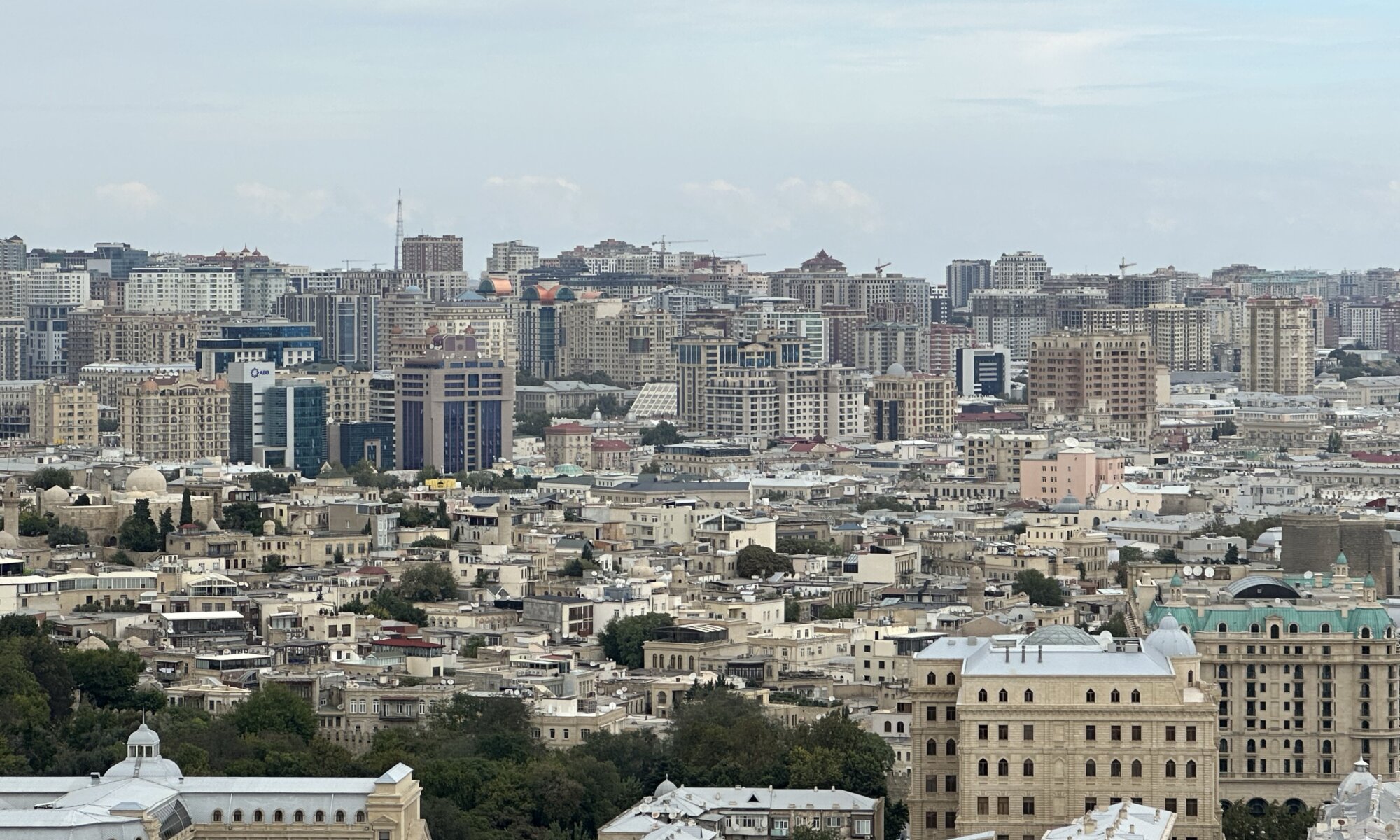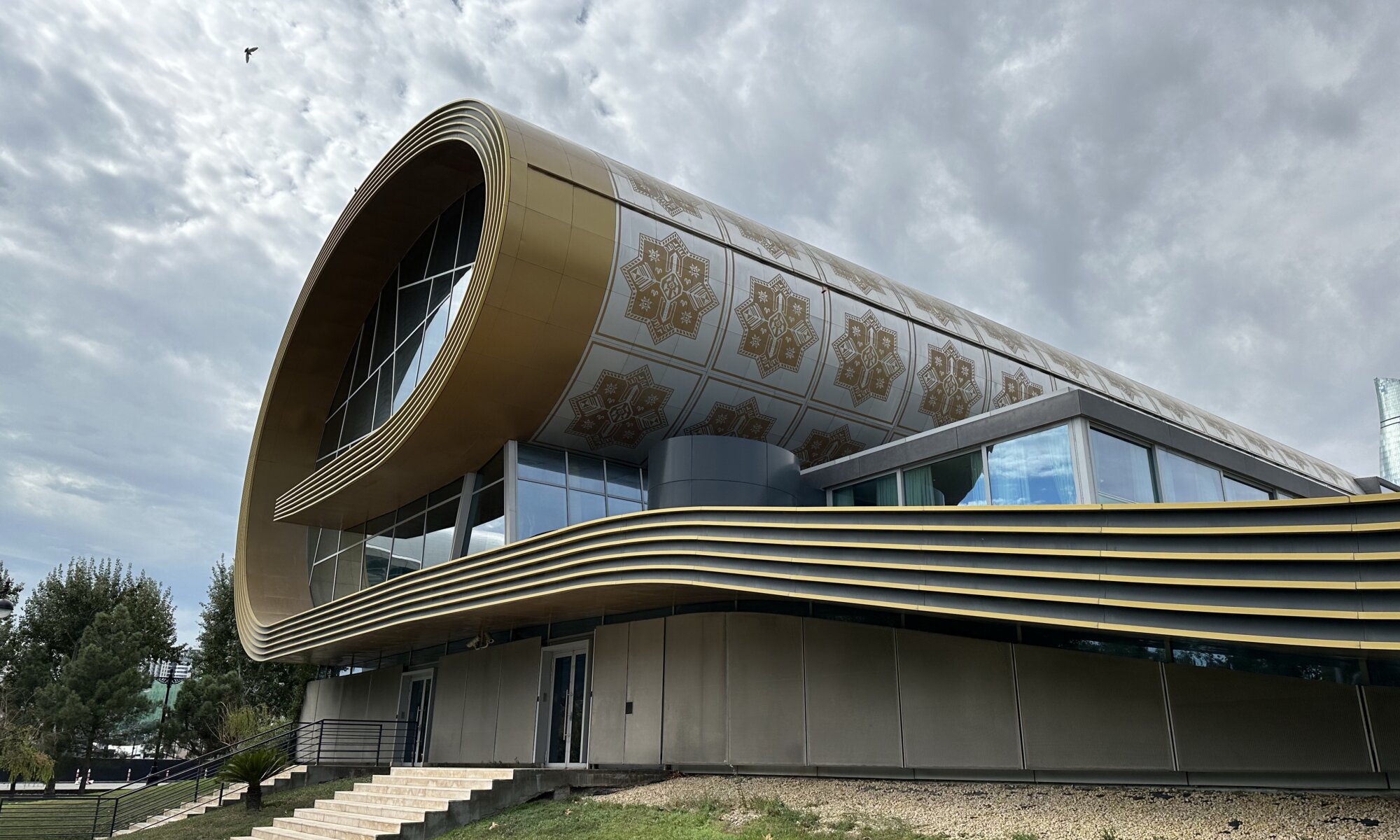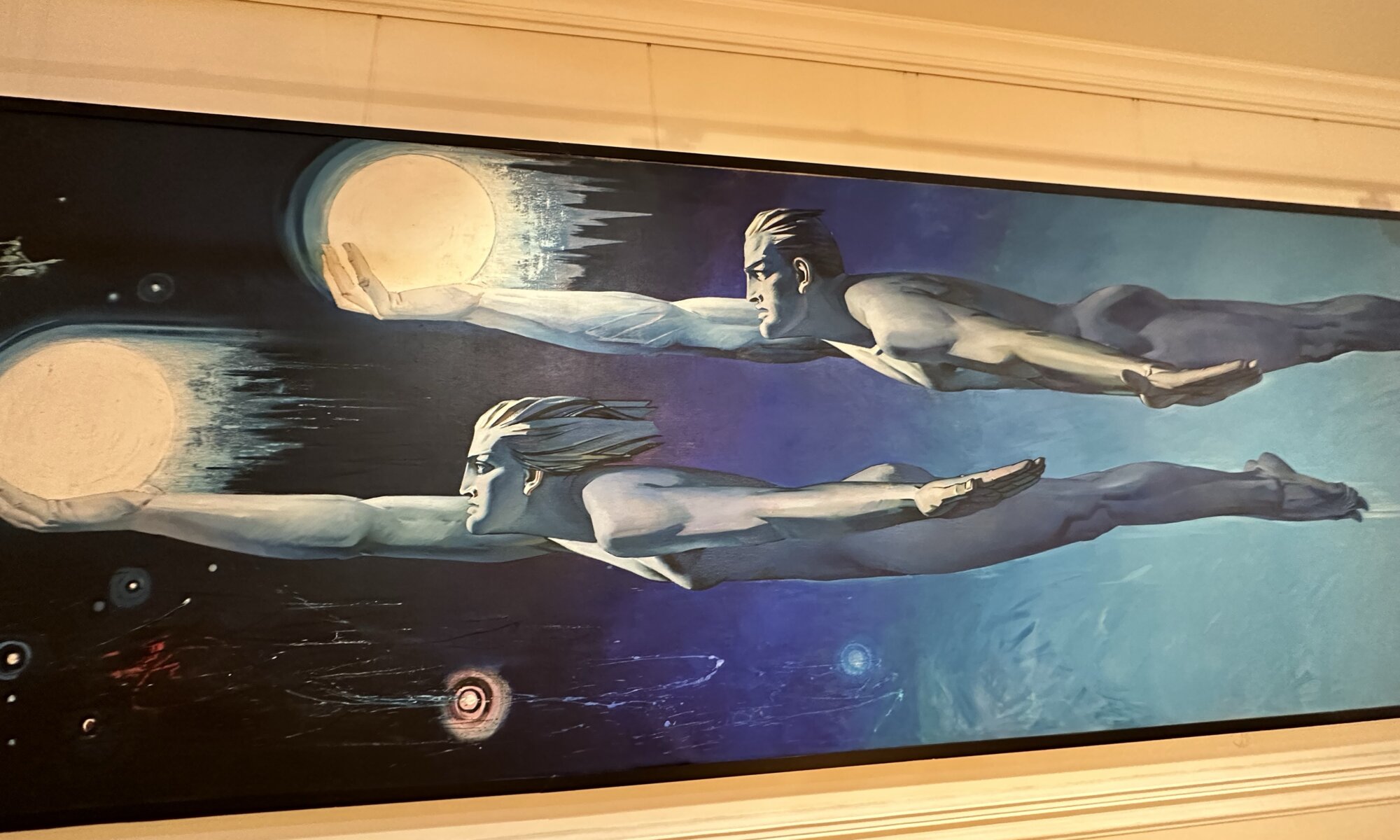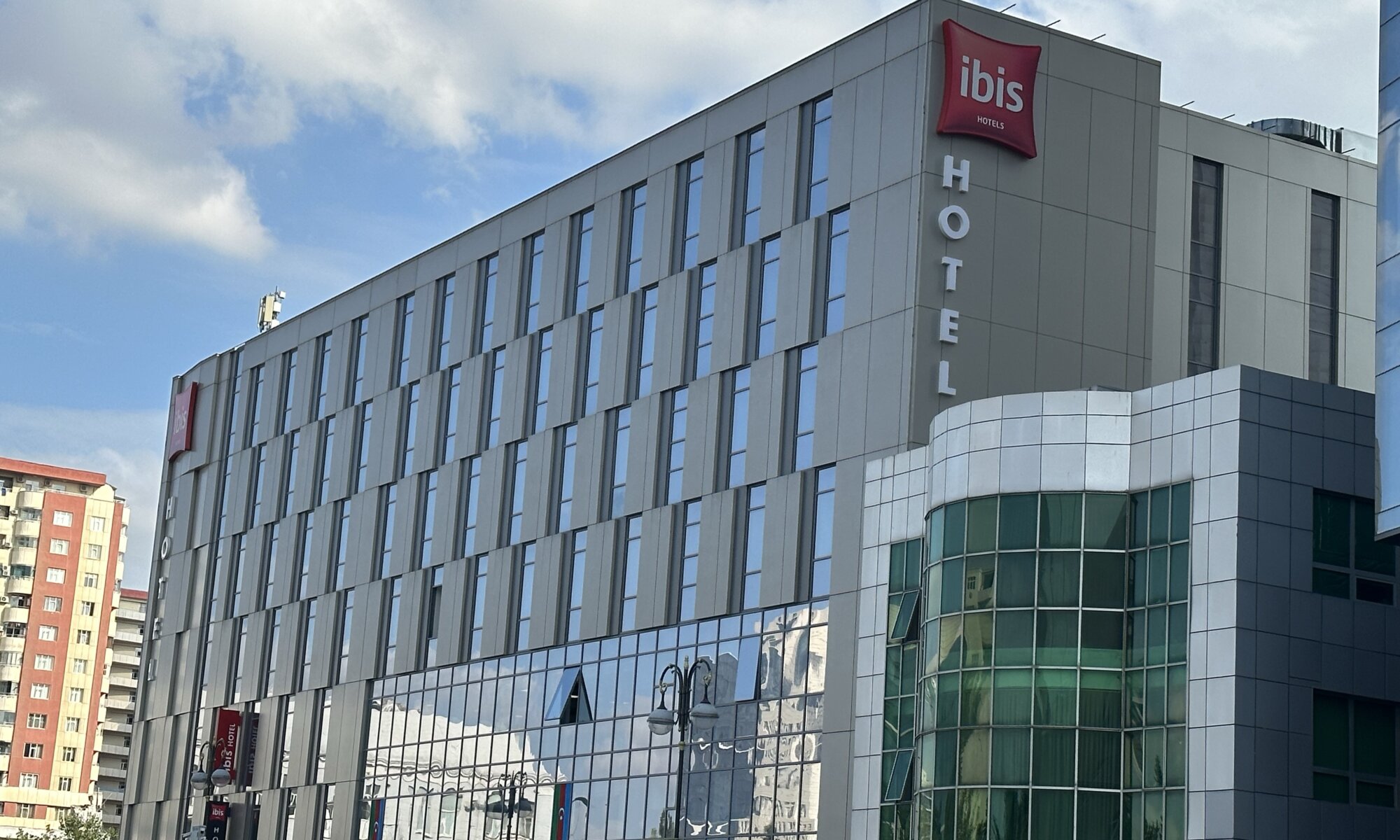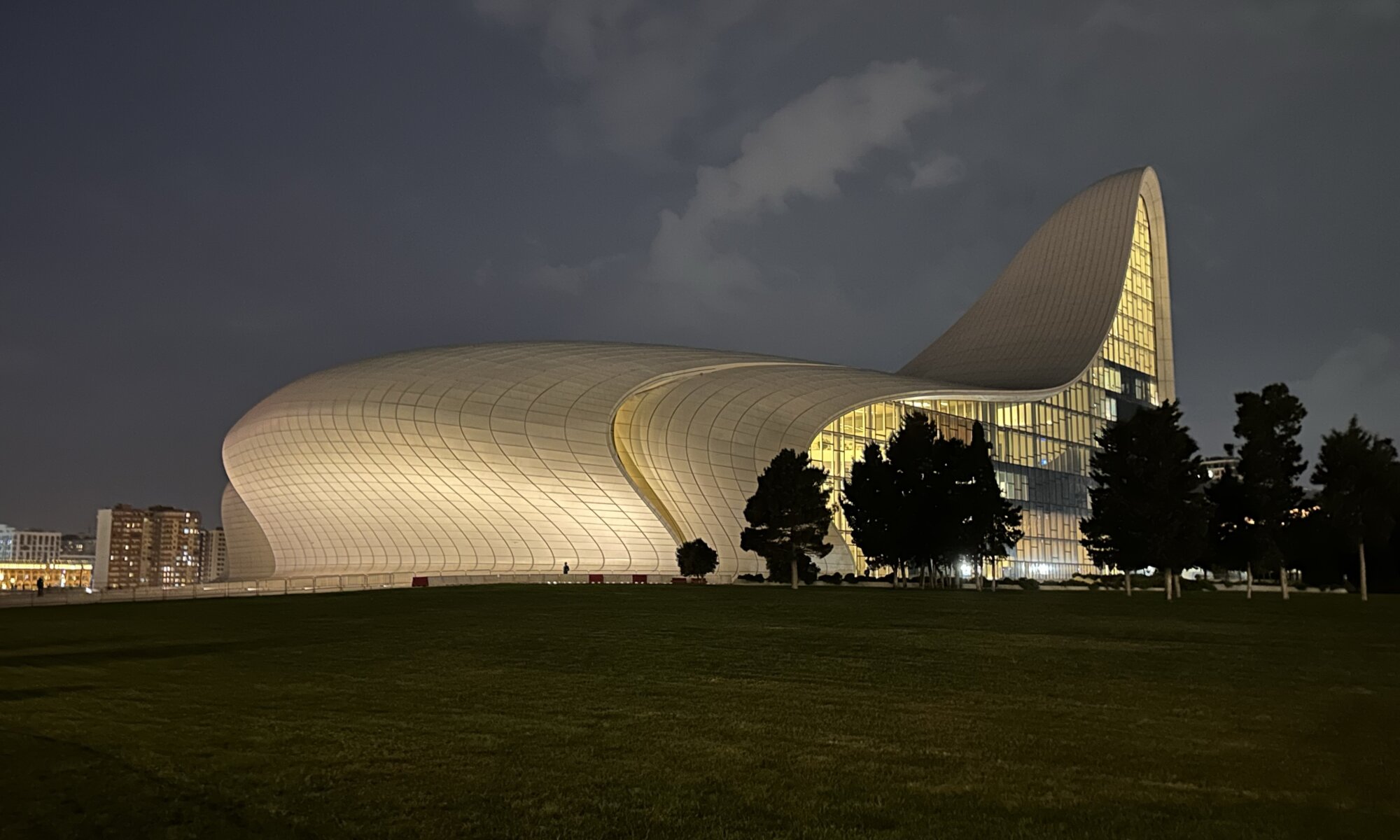Azerbaijan is a secular country not having a stake in religious matters. There are some Russian orthodox Christians, a large Jewish community focused on Bakı – but the majority of Azeris are Muslims belonging mostly to Shia Islam. Therefore you’ll find different mosques throughout Bakı; the biggest and most modern one is the Bibi Heybat mosque outside of the city.
Continue reading “Bibi Heybat mosque”Caspian sea
The Caspian sea (Xəzər dənizi) is no sea, it is the largest lake on the planet. It has no connection to an ocean, is 371,000 square kilometres large and one kilometre deep at the lowest point. Countries around the lake are Azerbaijan, Russia, Kazakhstan, Turkmenistan and Iran. The Caspian sea is an important economic resource for those countries; it is used for fishing but especially for gaining crude oil and natural gas.
Continue reading “Caspian sea”Azerbaijani avant-garde
The Museum of Modern Art (Müasir İncəsənət Muzeyi) at Bakı is an unexpected gem aside of the areas typically visited by touristis – the old city center is far away, even the boulevard stretching along the shore ends before you reach the museum. Once you’ve found your way you’ll be rewarded with a large collection of contemporary Azerbaijani art in a very special museum building.
Continue reading “Azerbaijani avant-garde”Dağüstü
The Dağüstü park of Bakı is located on one of the highest hills of the city and close to the city center. Most people get up there to enjoy nice views on the old town (İçərişəhər) and the Caspian sea. But the area has more to offer than that: up there you’ll find the parliament building, the Flame towers, a Turkish mosque with rich decorations and the alley of the martyrs (Şəhidlər Xiyabanı) which includes around 15,000 graves.
Continue reading “Dağüstü”Xalça Muzeyi
Carpet making has a long tradition at Azerbaijan. There are different schools for that and every region has its unique style. To remember that and to built a bridge between the traditional and the new Azerbaijan the new carpet museum (Xalça Muzeyi) has been opened at Bakı in 2014 directly at the shore of the Caspian sea. The architecture of the museum is special as it copies the shape of a rolled-up carpet (or a jelly roll) – a nice idea, but it seems to make presenting the collection of carpets and rugs a bit uneasy.
Continue reading “Xalça Muzeyi”National art museum
A fantastic collection of art can be found southeast of the İçəri Şəhər of Bakı: the Azərbaycan Milli İncəsənət Muzeyi (national art museum). It was founded in 1936 and contains 17,000 items of which 3,000 are on display in two buildings dating back to the first oil boom in Azerbaijan. And that is already the most important thing you need to know: the museum consists of two buildings that are connected and which you both need to see.
Continue reading “National art museum”ibis Baku
The city of Bakı offers a wide range of hotel options: from the typical high-class and upper class western hotel chains (easily bookable via the Internet) to charming smaller hotels especially around the inner city İçəri Şəhər. Most tourists seem to prefer the latter and book local hotels and apartments close to the historic city center.
Continue reading “ibis Baku”Manatı and Qəpik
If you need to pay at Azerbaijan you’ll have to use the Azərbaycan Manatı (AZN, ₼). The currency symbol is like the Euro sign but rotated 90 degrees to the right and that is not the only connection to the Euro: the Manatı notes and coins might look familiar to Europeans as they’ve been designed by the same currency designer, Robert Kalina. The Manatı is divided into 100 Qəpik and all available coins are Qəpik, the smallest note is one Manatı.
Continue reading “Manatı and Qəpik”Heydər Əliyev Mərkəzi
The most impressive modern building at Bakı is the Heydər Əliyev Mərkəzi: a cultural center built until 2012 and named after the former president Heydər Əliyev (reigning from 1993 to 2003). It was designed by star-architect Zaha Hadid and opened by president İlham Əliyev, the son of Heydər Əliyev. It looks like a giant sculpture without right angles and flat surfaces. The cultural center includes the national museum, exhibition and concert halls as well as a library.
Continue reading “Heydər Əliyev Mərkəzi”Flame Towers
The modern icon of Bakı has been built between 2007 and 2013 on a hill close to the old city center. The three Flame Towers are between 160 and 182 meters high and copy the structure of – surprise: flames. In daytime they’re just strangely shaped skyscrapers dominating the skyline. After sundown they become screens that show three things continuously rotating: the Azerbaijan flag, people weaving the Azerbaijan flag and most impressive, huge flames.
Continue reading “Flame Towers”